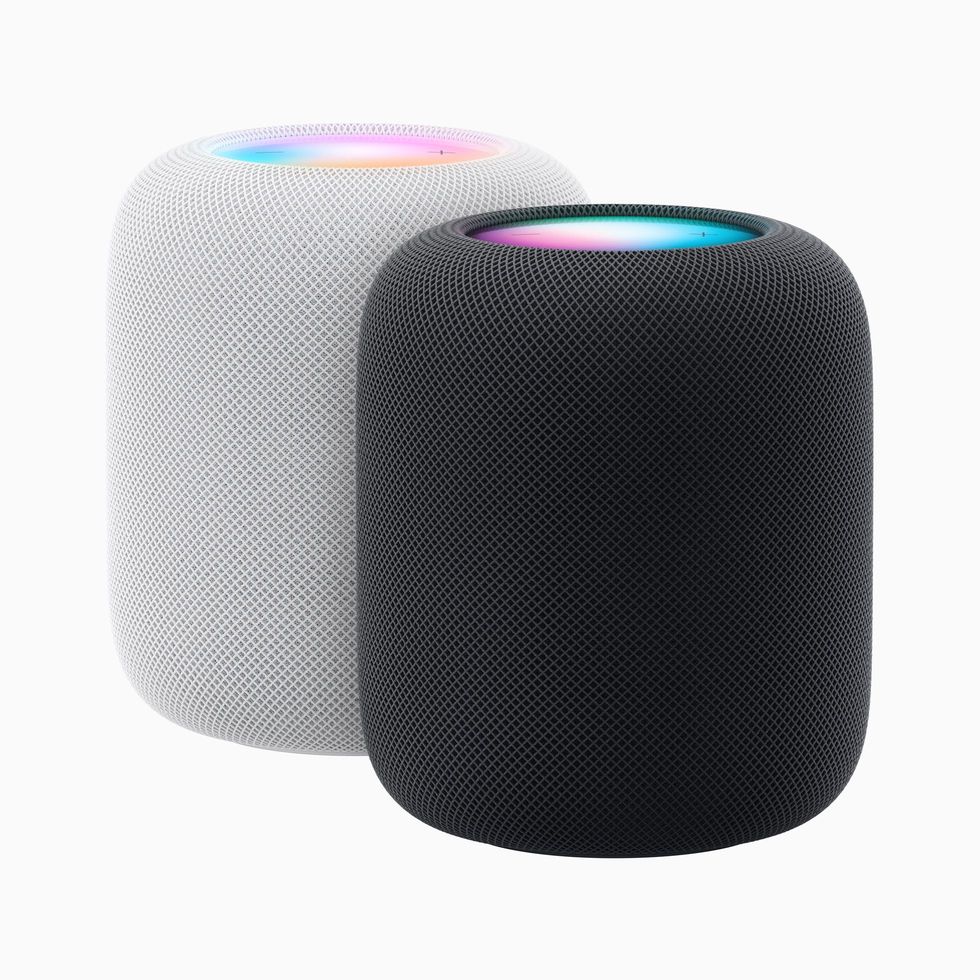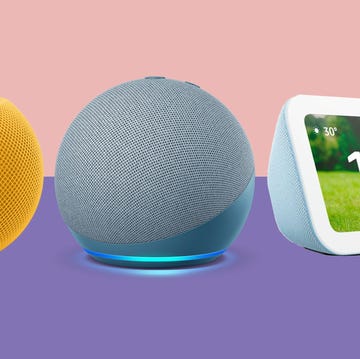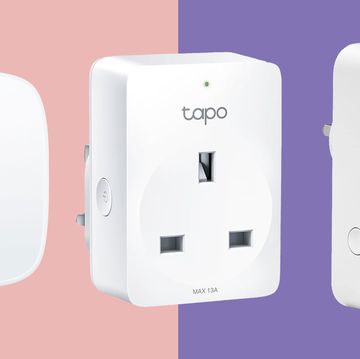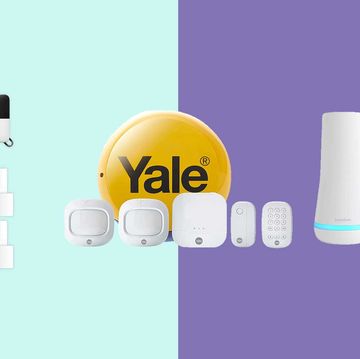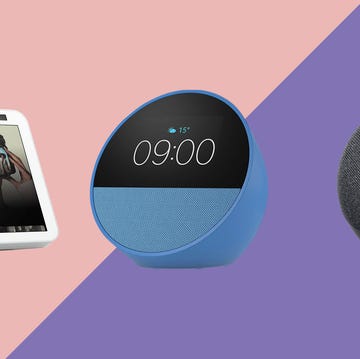If you’ve connected all your smart home devices with Apple HomeKit, I'm sure you’ve probably got a HomePod mini or two to control all your tech. Whether you use it for dimming your lights, changing the temperature on a smart thermostat or switching smart plugs on and off, I know how quickly Siri becomes an essential companion at home. And that’s before I get to using the assistant to set reminders, a quick timer while cooking or to check on the weather forecast.
Unless you got your hands on the original HomePod within the four years that it was available on shelves, though, chances are that you’ve only got its diminutive sibling. The sound from the mini model is terrific, for its size, but we’re sure you’ve been anticipating an upgrade.
That wait ended in 2023, thankfully, as Apple unveiled a revamped HomePod, bringing with it new smarts, new sensors and a bigger and more dynamic sound. It also comes in at a slightly lower cost, with a new starting price of £299, down from the original £319 of the first-gen speaker.
What to read next
I’ve been using the upgraded second-generation HomePod for the past few months and I'm here to tell you that I'm seriously impressed. It’s not just the best-sounding smart speaker for Apple users, it might be the best-sounding smart speaker full stop.
HomePod 2: Key Specifications
- Size: 6.8 x 6.8 x 14.2 cm
- Weight: 2.3kg
- Speaker configuration: 4-inch woofer and 5 tweeters
- Microphone: Four
- Colours: White, Midnight (Black)
- Sensors: Temperature, Humidity, Accelerometer (sound recognition coming in a software update)
- Power supply: Mains
What’s new in the HomePod 2?
It’s worth noting that, even if it was discontinued by Apple, we loved the original HomePod in our first tests in 2018 and our follow-up review in 2020. That speaker delivered a rich sound quality and seamless integration for anyone using Siri or a smart home setup with Apple HomeKit integration.
We did, however, note that HomePod isn’t as useful if you don’t have an iPhone or aren’t subscribed to Apple Music. The new model builds on the previous generation by adding the latest smart connectivity standards (Thread and Matter), Apple’s ultra-wideband tech (this allows you to transfer music from your iPhone to the speaker – and it works like a dream) and sensors that the old one didn’t have (including temperature, humidity and a sound recognition feature to alert you if a smoke alarm goes off).
Super simple setup
It’s a little cliché to say that Apple tech “just works” but that doesn’t stop it from being true. The setup for the new HomePod is just as straightforward and quick as it is for Apple’s HomePod mini speakers.
Once you take the new model out of its box – fair warning, it’s a hefty unit that feels heavier than you expect (although lighter than the previous version) – and plug it in, it’s just a case of bringing your iPhone near to the device and following the step-by-step onscreen instructions within Apple’s Home app.
Delightful sound quality
I know the main thing that matters with any speaker. How good does it sound? I'm pleased to report that the audio is astounding from the HomePod. What’s most impressive is that you don’t need to turn the volume up too loud to hear loads of precise detail, especially in the bass where other speakers (even high-end ones) can quickly get muddy and congested.
However, once you do turn it up a little, you can really appreciate Apple’s clever room-sensing tech at work. It doesn’t take long for it to fill the space with sound, and to make it feel like it completely surrounds you and isn’t coming from a single identifiable source.
I’d bet you could close your eyes and not be able to pinpoint the location of the speaker. I tested the audio quality with pop playlists, relaxing ambient music and exuberant soundtracks available via Apple Music, and I wasn't disappointed by any of it. I also used AirPlay to stream my podcasts and more tunes via Spotify.
A brilliant Apple Music and Apple TV companion
Overall, though, you’ll make the most out of the HomePod if you use Apple Music for your listening. Unfortunately, you can’t just ask the speaker to play Spotify directly over wifi, if you do, it'll play over AirPlay from your phone or you have to manually start your album or playlist through the app for the streaming service and then select the output destination as your HomePod via the AirPlay menu.
Where the HomePod shines is as a hands-free way to control your Apple Music playback. Just say “Hey Siri, play pop music”, “Hey Siri, play Ultimate Cheese” or “Hey Siri, play music like Taylor Swift” and you’ll get the expected playlist instantly. I have, sometimes, found Siri struggles to understand exactly what I'm requesting, but if I repeat it slower it usually works the second or third time around.
As you’d expect, the whole experience gets better the more Apple gear you’ve got. So, if you’ve got an Apple TV 4K as your streaming device, you can set the HomePod as the audio output. Make sure it’s connected via the “HDMI eARC” port on your TV and you’ll soon find it works as a complete soundbar replacement.
The best way to do this is by pairing two HomePods as a “stereo pair” – this enhances the overall experience (both for music and movies) if you can afford two HomePods (that's £598, more than several soundbars). Still, it delivers an impressive surround sound experience for all the audio through our telly, and I've found it can create booming low-end rumbles and convincing cinematic effects.
However, a dedicated soundbar wins for dialogue clarity through the central channel. With the Bose Smart Soundbar 600, I found dialogue more intelligible when compared to the pair of HomePods, despite it having fewer speakers. The £499 Bose is better for overhead Dolby Atmos sounds too. It's pretty close overall, and I'd say the HomePod pair works far better than you'd expect for TV and movies.
HomePod 2 drawbacks: It's still not for everyone
As I’ve already mentioned, the HomePod rewards those within the Apple ecosystem but is fairly impenetrable if you’re considering it without having an existing host of Apple products or services. This is definitely a bit of a downside. So, even if it sounds wonderful, it means there are a few people I’d struggle to recommend it to.
On the smart home side of things, it’ll only work if you’ve got your smart gadgets set up via HomeKit, meaning it’s not quite as useful for those reliant on Alexa or Google Home. This is the case for any smart speaker but it’s worth being aware that it’ll just be useful for your music and podcast listening if you’re not able to use the smart benefits.
I’d also recommend having an Apple Music subscription as the integration with third-party streaming services is still in its infancy. You can connect the likes of Deezer and TuneIn Radio to play music via Siri requests, but major players like Spotify still aren’t on board.
And, lastly, if you don’t have any Apple products and use an Android phone, I can’t recommend the HomePod to you. It’s impossible to pair it to or control it with an Android device, so this is a non-starter.
Apple HomePod 2: Verdict
Overall, I love the ease and simplicity of the HomePod and the incredible sound quality this speaker delivers, especially when paired with other HomePods for a multi-room audio system.
The mesh fabric look is subtle and stylish, and it fits well into any home decor. The sonic experience is dynamic and exciting, and the speaker can get really loud if you push up the volume. The good news is that you won’t need to, though, with it giving loads of clarity to the bass and detail in its treble too.
If you already own other Apple products, though, this is a perfect companion for hands-free Siri conversations and quick access to your Apple Music playlists, and it's ideal as a smart home hub and speakers for an Apple TV.
While I can’t recommend the HomePod for Android phone owners, it’s a must-have for Apple HomeKit users looking for a key smart home upgrade to bring incredible audio into their homes.
Apple HomePod 2: Other Products to Consider
We've been hands-on with several other smart speakers that compete with the HomePod, both when it comes to interconnected features and sound quality. If you feel like Apple's option is still rather limited to those with devices made by Apple, or that it's rather pricey, here are a few of the main rivals we'd recommend:
- Sonos Era 100 for £249: Great for any room of your house, the Sonos Era 100 replaces the Sonos One speaker and delivers brilliant audio quality and seamless integration with the brand’s other devices for a true multi-room audio setup. It runs off your home wifi network and has Bluetooth, Alexa voice control and AirPlay 2 built-in. I love the sturdy build quality and think it looks great on a TV stand or bookshelf. It's also £50 cheaper than the second-gen HomePod.
- Sonos Era 300 for £449: If you want to take the audio performance to the next level, get the Era 300. Unlike the Era 100, it supports spatial audio via Apple Music and Amazon Music Unlimited (making it more versatile than the HomePod) and you’ll hear your music coming from all around you. This feels more encompassing and has more scale than the HomePod 2, although it costs much more. The shape (which Sonos calls “cinched hourglass”) isn’t for everyone, and you need to have 60 cm of space overhead to get the best performance, but this is an excellent luxury option.
- Amazon Echo Studio for £220: If you already use Alexa for your smart home gadgets, it's going to make a lot more sense to pick the Amazon Echo Studio over the HomePod. Its sound rivals the Apple speaker while costing considerably less, and it delivers immersive spatial audio for subscribers to Amazon Music Unlimited. It doesn't feel quite as premium as the HomePod but we appreciate the addition of physical buttons and it's overall a heavier and larger product that has a similar cylindrical design. It works well with a wider range of music streaming services and is a better pick for versatility if you're an Android user.
- HomePod mini for £99: If you're after Siri smart home control and voice assistance but aren't sure you need the audio quality of the full-size HomePod, I can't recommend the HomePod mini highly enough. This lower-cost HomePod delivers a far better sound than you'd expect for the size and it's immersive, even more so if you combine two HomePod minis for a stereo pair. I like how it comes in a wider range of colours to suit your home, and how affordable it is. For anyone starting a HomeKit-based smart setup, it's essential.
Simon Cocks is Good Housekeeping UK’s Technology Editor, overseeing tech shopping content and strategy for the title. He previously also worked across other titles including Esquire UK, Digital Spy, Men’s Health UK and Women’s Health UK.
Simon specialises in testing the latest smart gadgets, home entertainment gear, headphones, speakers, portable chargers, radios, e-book readers and smartphones. He's reviewed top tech products from brands including Google, Apple, Amazon, JBL and Bose.
A magazine journalism graduate from Kingston University in 2014, Simon also worked on the Discovery and Silkroad inflight magazines. He then gained experience writing about entertainment at SFX and Total Film. He also contributed reviews and interviews to TwitchFilm (later ScreenAnarchy), CultBox and Frame Rated.
He joined Good Housekeeping UK as the Editorial Assistant for Special Projects and was part of Good Housekeeping’s Consumer Affairs Team between 2014 and 2019. In this role, he conducted price comparison research, wrote detailed household and money-saving advice guides and edited thousands of in-depth reviews for the Good Housekeeping Institute.
He has focused on technology and gadgets since 2020, where he started by testing out power banks and instant cameras. He writes reviews, roundups, news articles and deals updates, and also covers top tech deals during sales like Amazon Prime Day, Black Friday and Cyber Monday.
When not testing out the latest gizmos, you’ll find Simon either catching up with the newest releases at his local cinema or out shooting with his beloved compact camera.
You can follow Simon on Instagram, on Bluesky, on LinkedIn and on Threads.

